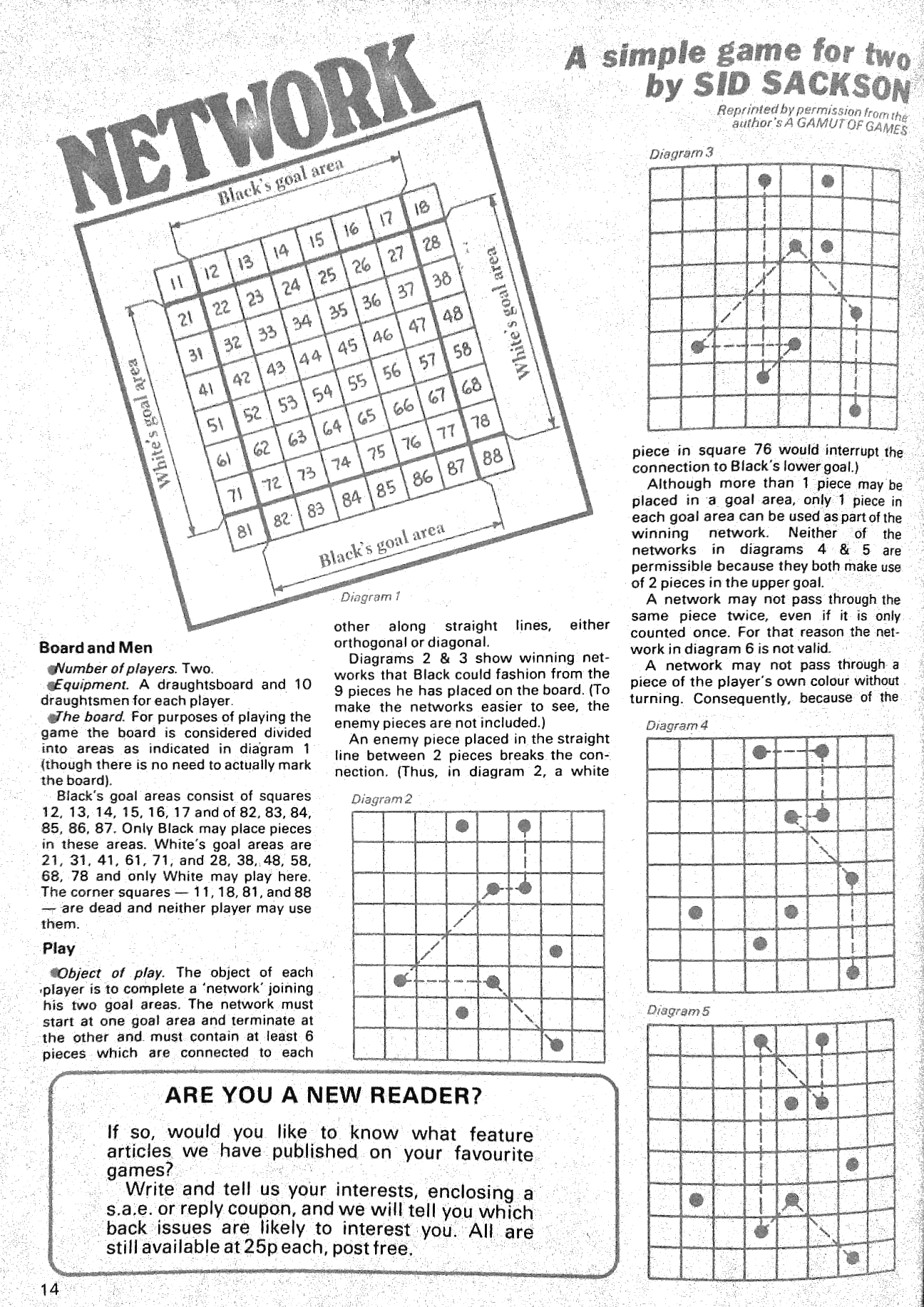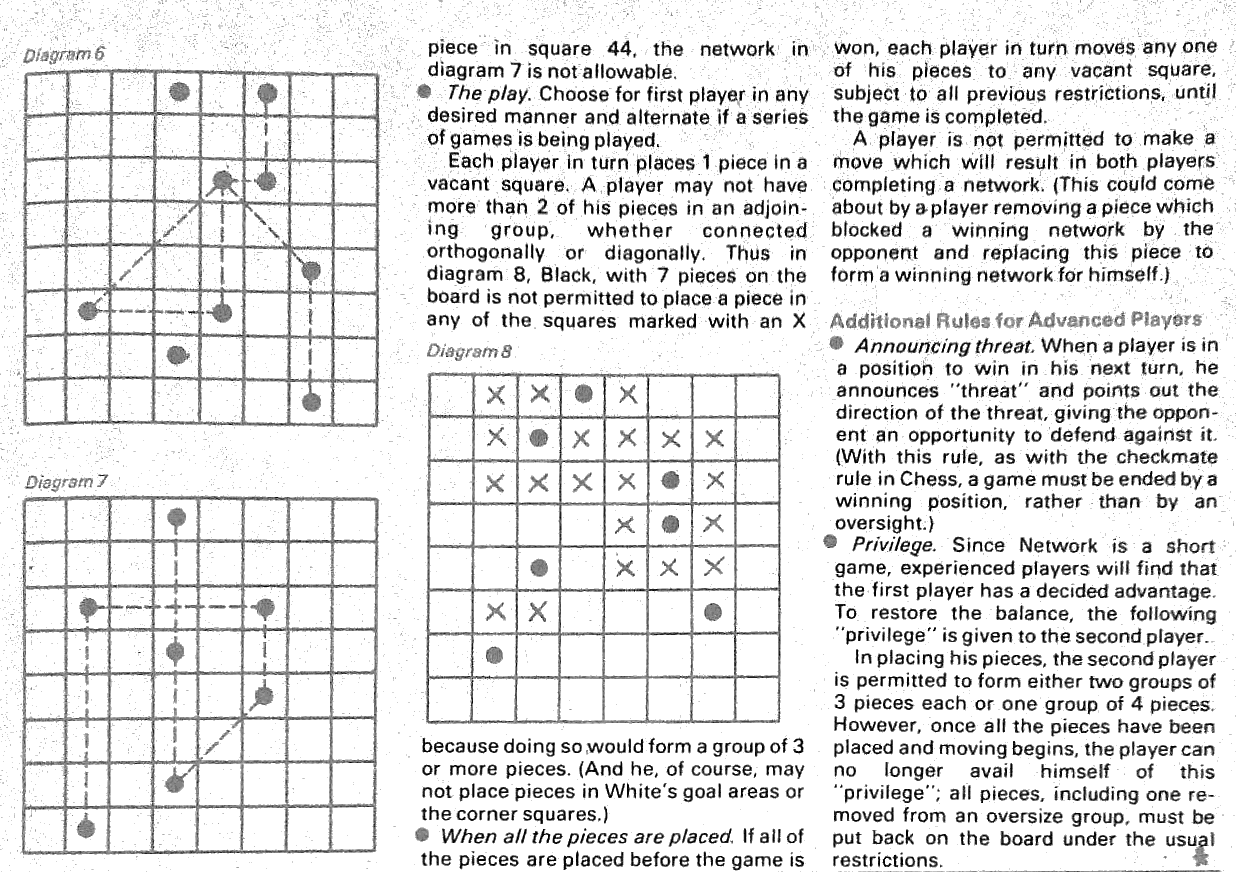NETWORK
Copyright (c) 1969 Sid Sackson
This game is played on an empty 8x8 square
board (each player has 10 stones offboard):
- GOAL AREAS - Black has the six
middle cells of the top and bottom row as his goal areas. White has
the middle 6 cells on the right and left column.
- The corner cells cannot be used.
- NETWORKS - A network must contain
at least 6 stones which are connected (unobstructed path) to each
other along straight lines, either orthogonal or diagonal.
- Only one piece in each goal area can
count as part of the network
- A piece cannot be used twice in a
network
- A network may not pass through a
stone without turning.
- An enemy stone placed in a line
between two friendly stones breaks the connection.
- DROP PHASE - At each turn, each player
drops a stone on an empty cell.
- A stone can only be (orthogonal or
diagonal) adjacent to just one friendly stone.
- A stone cannot be in the enemy goal
areas.
- A stone cannot be in the 4 corner
cells.
- MOVE PHASE - When all stones are
dropped (And the game didn't end yet), each player moves a stone into
an adjacent empty cell, subject to the same restrictions presented in
the drop phase.
- A stone cannot make a move which
would result in both players completing a network at the same time.
- GOAL - Wins the first player that
completes a network joining his two goal areas.
|
|
|
An example The
black stones do not complete a network, they use one stone more than
once (the marked stone). The red
marks show the open connections.
|
In his Gamut of Games, Sid Sackson wrote that the
first player as a "decided advantage". I would suggest using the PIE
rule after 3 or 5 drops.
David
Ploog comments: We've played this game a lot; the decided advantage for
the starting player certainly exists. Thus the second player will find himself
defending throughout the drop phase. Therefore he tries to combine this with
attacking moves. This is the fun of the game. [...] Perhaps the board
should be 10x10 or 12x12 (and the connection longer) in order to offset the
advantage a bit.
Here's a review from Games & Puzzles #22:


![]()
![]()